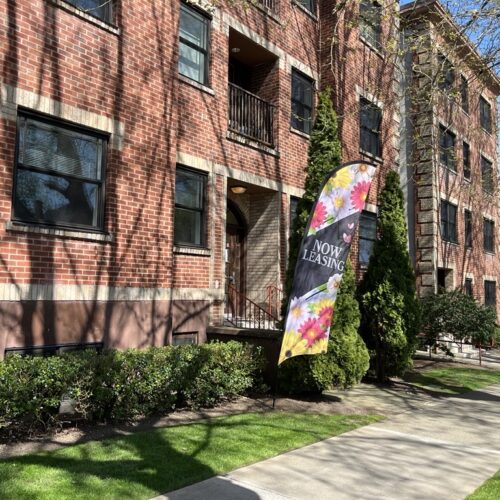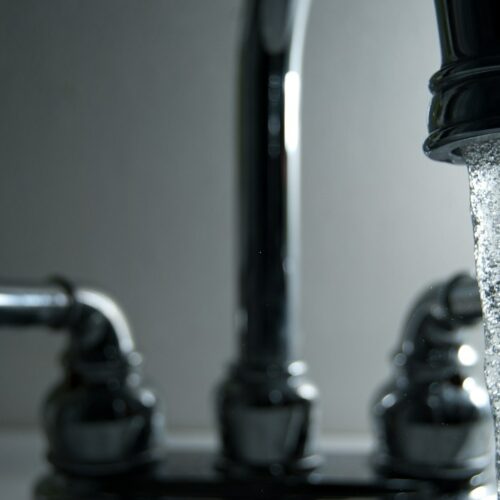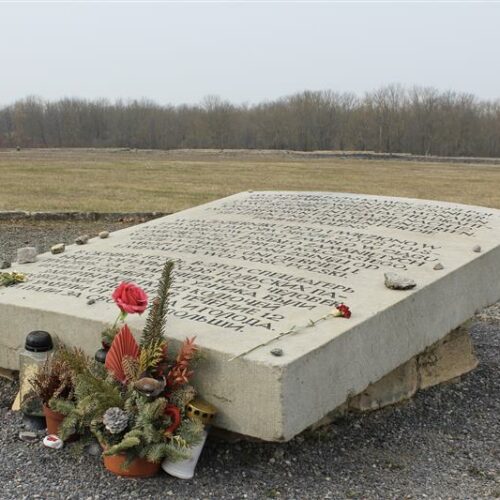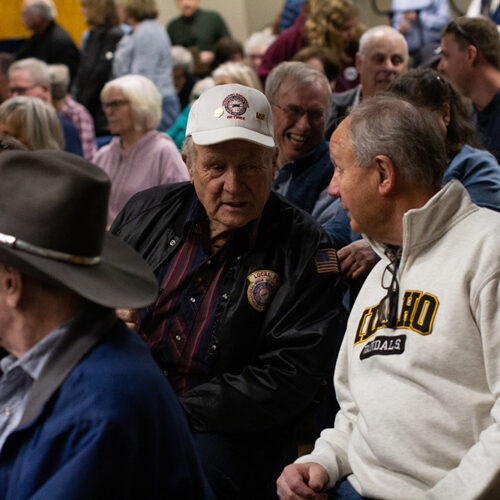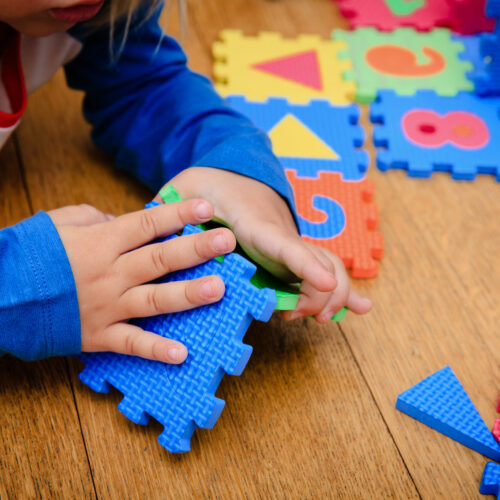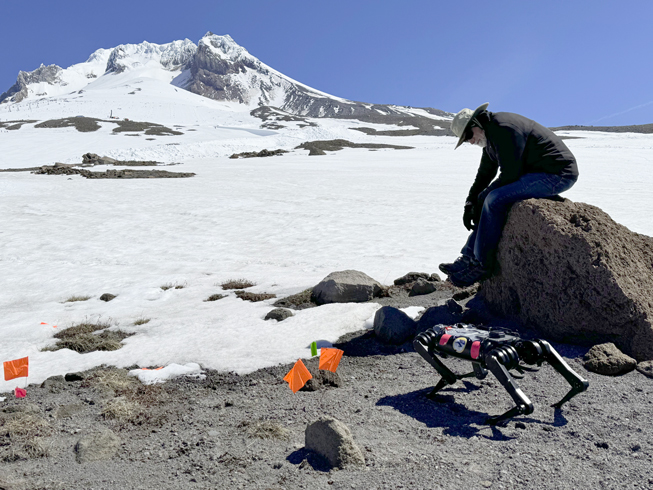
How a dog-like robot is training for space exploration on Mount Hood
Listen
Read
On rocky outcrops 6,000 feet up Mount Hood’s ski slopes, Spirit the robot took one small step for robots, one giant leap for science.
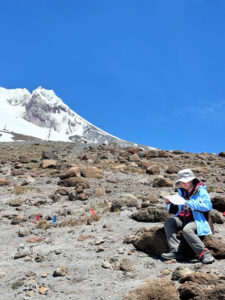
Feifei Qian looks over her notes while testing Spirit the robot. (Credit: Courtney Flatt / NWPB)
“It’s literally a robotic dog form,” said Feifei Qian, an assistant professor of electrical and computer engineering at the University of Southern California. “It can plow. It can basically dig a hole.”
Qian leads this team of 20 scientists and engineers of the LASSIE Project, which stands for Legged Autonomous Surface Science in Analogue Environments. They wanted to see just how well their collie-sized, four-legged robot could make it up Mount Hood’s gravel and snow.
“We had some early successes. We had a couple of spectacular falls that were really interesting,” said Diego Caporale, a postdoctoral researcher at the University of Southern California.
The scientists looked on as Spirit stood and started to head up the slope, cheering when the robot made it farther than they expected and gasping as it fell, rolling onto its back like a pup.
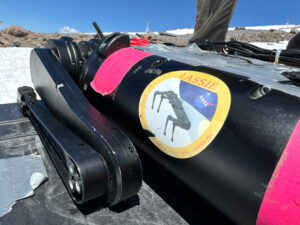
A close-up photo of Spirit. (Credit: Courtney Flatt / NWPB)
With each step, Spirit gently tapped the gravel or snow with its toe, although the toe isn’t quite what you’d expect. It looks more like a rubber stopper that might prevent a chair leg from sliding around.
Caporale drove the robot across all sorts of terrain.
“It’s very softly trying to understand the amount of force it’s applying, and then it’ll kind of fall in. It shifts its weight to do a different toe and puts way more weight on that toe. Eventually what we’re hoping to do is actually be shifting the weight at the same time,” he said.
The information the robot sends back with each step could tell scientists whether it’s good to build a structure in a certain spot on the moon or whether it’d be good to excavate, Qian said.
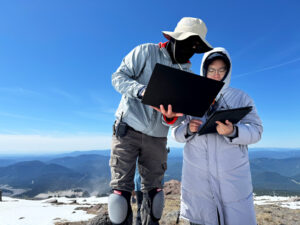
Diego Caporale, left, and Yifeng Zhang, both of the University of Southern California, work on getting Spirit to walk up the snowy and rocky areas of Mount Hood. (Credit: Courtney Flatt / NWPB)
“Just like us, when we walk we can feel, ‘Oh, this is sandy. This is clay. This is snow. This is ice,’ Qian said. “We want the robot to be able to do the same. Just by running around, it can help us scout and say, ‘Hey, this is an interesting spot. There might be some water here that I just discovered.’”
To figure out what ice feels like, the team walked Spirit across snow. But snow? In space?
Snow can feel like all sorts of material, Caporale said, which will help Spirit learn about walking on all sorts of surfaces.
“If you imagine wet dirt, it keeps a shape. So when you put your leg into it, you’re stuck,” he said. “I mean, we just had somebody put their leg up to their knee [in snow] and couldn’t get out without digging themselves out. And so the robot will have to solve the same problem.”
That wouldn’t be a problem for most space-bound robots, like Mars rovers, which used wheels to travel around. However, the rovers can’t climb up ground that’s not-so-flat or not-so-compact.
“Just like us, a legged form of rover will be able to traverse these challenging terrains,” Qian said.
Kenton Fisher, a flight systems engineer at NASA’s Johnson Space Center, said if scientists can get extra information from a robot just walking around — that’s a bonus.
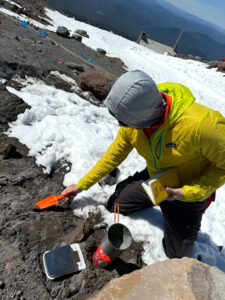
Kenton Fisher, with NASA’s Johnson Space Center, measures the amount of water in rocks by boiling them on camping stoves. (Credit: Courtney Flatt / NWPB)
“It’s not an extra payload that takes up mass and power and money on the mission,” Fisher said.
On Mount Hood, the robot was still learning.
“Currently the robot is a kindergarten kid. You need to say, ‘Hey, here’s a rock that looks interesting. Grab it and tell us what you see,’” Qian said.
After more and more training tests, the robot will better understand what the scientists are looking for.
“Later on when we go to the moon with the robot, the robot will become an undergraduate researcher or hopefully a graduate student,” Qian said, laughing.
To compare data, the multidisciplinary team matched what Spirit detected with its legs to more traditional forms of science, like rock composition sampling, lidar and thermal imaging.
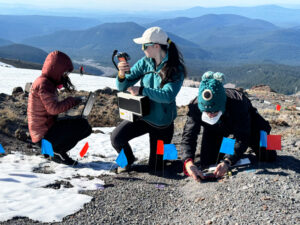
Tatiana Gibson, left, Alivia Eng, both of Georgia Tech, and Marion Nachon, of Texas A&M University, sample the composition of rocks on Mount Hood. (Credit: Courtney Flatt / NWPB)
While some scientists looked at the mountain’s surface, Cristina Wilson, a cognitive scientist at Oregon State University, looked at the scientists’ decisions. Her goal: to one day help the robot think like a scientist. She envisioned a relationship like R2-D2 and Luke Skywalker’s in “Star Wars.”
“Even if Luke gives R2 a command, we often witness situations in which R2 finds a better way. It’s an interesting model for how a robot and a human could interact,” Wilson said.
People don’t always make the best decisions, she said, but robots could help.
“On the moon, we have the opportunity for humans and robots to be side by side,” Wilson said.
Now, Spirit could help astronauts answer fundamental questions about space and life as we know it, Qian said.
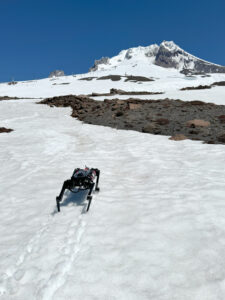
Spirit the robot walks up snowy slopes on Mount Hood. (Credit: Courtney Flatt / NWPB)
“All these fundamental questions of: What makes these planets? Where do we come from? Are there more of us out there? Are there environments that might be suitable for us in the future?” she said. “These questions can be better answered if we can better understand the past, the present and the future of planetary science.”
They’ll still need to understand how legged robots handle other challenges, like reduced gravity and the dark side of the moon. This is the second and last exploration of Mount Hood on the team’s $3 million grant from NASA. Next, it will roam White Sands National Park in New Mexico.


